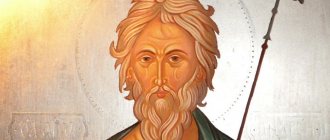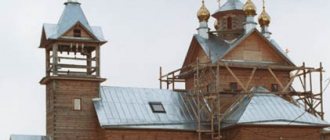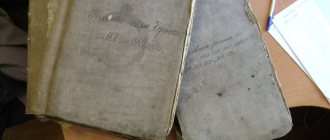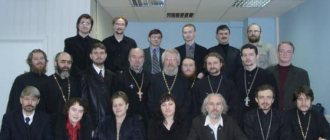Surprisingly, the sketch of this sign was created by Peter I himself! This highest award of the Russian Empire was the very first and most prestigious Russian order, which remained so until the October Revolution of 1917. Andrew the First-Called became his heavenly patron. The order is dedicated to this particular saint, since he has always been considered the protector of Rus' and the spreader of Christianity in Great Scythia, part of the territory where modern Russia is located. The apostle in question was one of the very first disciples of Christ, which is why he is known as Andrew the First-Called. The order created in his honor is almost the most expensive in the world. Its estimated cost exceeds $5 million.
Description
The Order of the Holy Apostle Andrew the First-Called was established by Peter I in 1698. This award included a star, cross and ribbon. The first component of it was worn on the left chest above all other regalia. This silver star in the center was decorated with a double-headed eagle, which was crowned with three crowns, and on top was a St. Andrew's cross with a crucifix. Around the circle on a blue background is the motto of the Order “For Faith and Loyalty.”
The award cross was made in the form of a golden double-headed eagle with three crowns, on which, like on the star, the crucifix of the Apostle Andrew the First-Called was superimposed. On the reverse side of this sign was written the motto of the order. This cross was usually worn, like all the highest state awards of the first degrees, on a ribbon at the hip. For this sign, a blue moiré sash approximately 10-12 cm wide was worn, which was worn over the right shoulder.
There were cases when the Order of St. Andrew the First-Called was worn around the neck, hanging it on a gold chain, consisting of a number of double-headed eagles, coats of arms, St. Andrew's crosses and other links made in the form of medallions. All signs, as well as the chain itself, were quite often decorated with a scattering of small diamonds, so after the death of the gentleman, the heirs were obliged to return everything back to the state treasury.
In 1855, according to the decree of Emperor Nicholas I, one addition was made to the design of the star and cross. Thus, when rewarding people for specific military merits, they were awarded the Order of St. Andrew the First-Called with swords depicted crosswise and located under the third upper crown.
First in everything
In 1697, Peter I went on a diplomatic mission to European countries, hoping to conclude a military alliance against the Ottoman Empire. The Tsar traveled incognito, introducing himself as a certain volunteer foreman Pyotr Mikhailov, but this “masquerade” did not deceive anyone. The English King William III received the noble Russian with appropriate honors and wanted to knight the oldest and most influential Order of the Garter in the country. Subsequently, five Russian emperors were awarded this honor, starting with Alexander I and ending with Nicholas II. However, Peter I diplomatically refused, since he would have to swear allegiance to the English crown, and this seemed to him a dubious step.
Despite the failed initiation, the Russian Tsar was delighted with the structure of the European order system. He thought about establishing his own highest award, which was supposed to gather the most loyal and influential nobles of the state at the throne. In pre-Petrine Russia, exemplary civil service or military exploits were rewarded with estates, valuable dishes, gold coins or a fur coat from the royal shoulder. Chivalry, which gave rise to European orders - unions of influential nobles headed by the reigning monarch, did not exist in Slavic lands. Consequently, there was no need for distinctive signs by which the members of each aristocratic organization recognized each other. But the course towards rapprochement with Western civilization required a revision of this tradition.
Transition to the European award system
An analogue of European awards in Muscovite Rus' can be considered gold coins, which were awarded mainly for military exploits. The denomination depended on the rank of the applicant: army commanders received from 6 to 13 gold pieces, soldiers - one kopeck each. Similar awards were sewn on hats or sleeves of outerwear, and the noble class preferred to wear them on a chain. Already at the beginning of his reign, Peter I replaced coins with medals, the design of which in many cases he developed himself. The awards were similar in weight and size to the new gold rubles, also introduced by the reformer Tsar. To prevent people from paying with insignia instead of real money, Peter ordered themed battle scenes with a date and a memorable inscription to be minted on the reverse. This is how the first award medals were introduced into use, which a little later began to be equipped with “ears” and awarded on a ribbon.
Highest insignia
Having visited Europe, Peter I realized the need to introduce elite regalia intended only for the nobility and emphasizing its privileges. Similar awards were also needed for diplomatic purposes, to thank foreign allies for services rendered. In 1698, the Tsar established the Order of St. Andrew the First-Called, the highest insignia of the reformed state. The patron apostle was not chosen by chance: starting from the 11th century, he was considered the guardian of Orthodox Rus' and the founder of the Byzantine church tradition, and therefore was especially revered. According to legend, Saint Andrew passed through the Crimea and the Black Sea region, and then along the Dnieper rose to the hills, where the glades later founded Kyiv. Here he planted a cross, predicting the future spread of the Orthodox Christian faith.
There is still controversy surrounding the exact date of founding of the Order of the Apostle Andrew the First-Called. The outstanding 18th-century historian Gottlieb Siegfried Bayer claimed that this happened on August 30, but did not provide any facts to support his version. Knights of the order traditionally gather on November 30, the feast day of St. Andrew according to the old style.
Much more is known about the first award. On March 20, 1699, the new badge of honor was demonstrated at a reception by the Austrian envoy by Peter I’s closest associate and friend, Foreign Minister Fyodor Golovin. His initiation into the knighthood took place in the morning of the same day, but officially they kept silent about it, since the statute was still in development. Golovin resorted to diplomatic cunning. He boasted about “St. Andrew the First-Called” in a private conversation with diplomat Johann Korb, without doubting that he would immediately notify the sovereign, Leopold I, and through him the whole of Europe about the emergence of a progressive order system in Russia.
The draft statute was published in 1720, when there were already 7 recipients, including Peter I himself. The drafters relied on the best European examples, in particular the provisions for the British Order of the Garter and the French Golden Fleece. The first and at the same time the highest Russian award was awarded for both military and civilian services. Only holders of a count or princely title, senators, ministers, ambassadors and other persons holding important government positions could become knights. The military required a rank no lower than general or admiral. The candidate's age was at least 25 years, an impeccable reputation and an impressive fortune were also prescribed in the statute. The last point was important, since the recipients contributed a considerable amount “for charity” to the state treasury.
Statute
Surprisingly, the official regulations on the Order of St. Andrew were approved by Paul I only in 1797, that is, after almost a hundred years. A star with a cross, decorated with diamonds, became the highest state award, which was presented by the emperor himself at his personal request. The new statute stated that starting from this year, it is prohibited to decorate the Order of the Holy Apostle Andrew the First-Called with any precious stones at your own discretion.
This insignia was a reward of the tsars and the very top officials of the Russian state. It is worth noting that both the autocrats and their heirs were not required to perform any heroic deeds in order to receive this award. The Grand Dukes were presented with a blue ribbon with an order immediately upon baptism, and the rest of the relatives, in whose veins the imperial blood flowed, were given upon coming of age.
Appearance of the Knights of the Order
Interestingly, the holders of the order were required to wear special vestments. That's what it was called - the order's attire of cavaliers. It included a green velvet cloak lined with white fabric on the inside, a collar that consisted of silver-colored brocade with laces and tassels of a similar color. If you look closely, you could see an embroidered star of the order on the left side. The inside of the cloak was trimmed with gold braid. The outfit included cashmere pants, silk white stockings, and a velvet black hat. On the hat from afar one could see a white and red feather, which were attached with a blue ribbon in the form of a St. Andrew's cross. Unlike the time when the order as an award was just introduced, by the time of the reign of Emperor Paul the First, about a thousand people already wore the order.
I make a cinnamon hair mask for shine. However, this is not the only effect
Expanded clay, mineral wool or coconut substrate: what is better to grow seedlings in?
Anti-aging midi haircuts for spring 2021: a guide to choosing a trendy model
Peculiarities
At that time, the Order of St. Andrew the First-Called literally determined the position of its owner in society, as well as the rank to which he was elevated. This award could only be given to persons with a rank of at least privy councilor, vice admiral or lieutenant general. A person who was awarded the St. Andrew's sign automatically became a holder of the Order of the White Eagle, Alexander Nevsky, as well as the first degrees of Saints Stanislav and Anna. Having received the highest award of the Russian Empire, its owner did not have to wear the attributes of other orders and their ribbons at all.
Few people know, but until the 19th century, all the highest awards were made by hand by various jewelry artists. Even the most famous master in the world, Gustav Faberge, did this. Considering this fact, we can say with confidence that one Order of St. Andrew the First-Called (photos are given above) will certainly differ from the other not only in its picturesque image, but also in the shade of enamel or size. Although the statute of the order described in detail what should be drawn on it, it did not say anything about how it should be done. Such uncertainty gave artists some creative freedom, which sometimes led to deviations from the rules.
Badge on the order chain and star
However, not everyone was awarded the order. There was a special charter, according to which only people who had either a noble rank, a state rank, or a military rank no lower than general could become holders of the order. People applying for a high award were required to have a solid financial fortune in order to be able to constantly maintain a solid status. It is interesting that at one moment only twelve Russians could be cavaliers, no more. And together with foreigners, the number of people with an honorary order should not exceed twenty-four people. Today we would be outraged by this state of affairs.
First gentleman
It became F.A. Golovin in March 1699. This statesman was an active assistant and like-minded person of Peter I in the matter concerning the creation of both the regular army and the Russian fleet. In addition, Fyodor Alekseevich was a competent diplomat and from 1686 to 1689 served as ambassador to China. His merit was that he was able to sign the Nerchinsk Treaty, which was very beneficial for the Russian Empire, which dealt with the border between the two countries.
6 years after returning to his homeland, he became a participant in two Azov campaigns. During the second of them, he was the commander of the first Russian squadron that fought in the Sea of Azov. In 1697, Golovin returned to his diplomatic activities and, thanks to his rich experience and indefatigable energy, helped Peter I achieve great success during the Great Embassy abroad.
A little later, Fedor Alekseevich became the head of the Ambassadorial, Naval and Yamsky orders, as well as the head of the Golden, Silver and Armory Chambers. Admiral General and Field Marshal Golovin was actually the creator of higher military education in Russia. Therefore, it is not surprising that when, according to the decree of Peter I, the country’s first school of navigation and mathematical sciences was opened in Moscow, it was Fedor Alekseevich who was entrusted to head it. For all of the above merits, he received the highest badge of the Russian Empire - the Order of St. Andrew the First-Called.
Cross symbol
The cross always symbolizes something. And this time is no exception. Experts believe that the cross once made a long journey to the east, visited the lands of the Slavs and became a harbinger of the glorious city of Kyiv, which later became the place of God, since many churches were erected there. There is an opinion that the Apostle Andrew left a pectoral cross in the lands where Russian cities were subsequently formed. After all, it was precisely when he arrived in the eastern lands that he began to preach Christianity with redoubled zeal and patience. Since the reign of Peter the Great, Apostle Andrew the First-Called was considered the patron saint of St. Petersburg, and a little later it turned into a symbol of the Russian fleet and became part of the St. Andrew’s flag. If you remember, a blue cross shines on a dazzling white cloth. You can admire the canvas in all its glory on the Black Sea coast, as well as in St. Petersburg.
Found a violation? Report content
Subsequent awards
In February 1700, Peter I personally presented the second highest regalia of the Russian Empire. This time, the Order of St. Andrew the First-Called went to the Ukrainian Hetman Mazepa for military actions against the Crimean Tatars. The next person to receive this honorary badge was Count Sheremetyev, having achieved victory over the Swedes. The emperor himself was sixth on this list.
Number seven was A.D. Menshikov because, together with the tsar and a small detachment of guards during the battle, he boarded a boat and helped board two warships belonging to the Swedes. It is interesting that in that battle Peter I fought with the rank of captain of a company of bombardiers and for his courage Fyodor Golovin awarded him the Order of the Apostle Andrew the First-Called. Menshikov fought as a bombardier lieutenant.
Interesting facts about the awards
At the same time, no more than 12 native Russians and the same number of foreigners could become holders of the Order of St. Andrew the First-Called. This was the plan of Peter I, based on biblical symbolism. The revelation of John the Theologian mentions 24 elders who surround the heavenly king sitting on the throne of Glory. By analogy, next to the earthly ruler there should have been the same number of order holders. They tried to adhere to the strategy of the first Russian emperor both before the 1917 revolution, when the total number of recipients was slightly more than 1000 people, and during the existence of the Russian Federation. So far, there are only 21 gentlemen on the new list, and one of them, the writer Alexander Solzhenitsyn, refused to be awarded.
Ivan Mazepa
The biography of the Ukrainian hetman, who won the favor of Peter I by denouncing his former benefactor, Prince Golitsyn, is ambiguous and full of dark spots. At first, he actively supported the endeavors of the young Russian Tsar and twice participated with him in the Azov campaigns, which confirmed his trustworthiness. Without hesitation, in 1700 Peter I made Mazepa the second holder of the St. Andrew's Award, showing complete confidence, despite the increasing denunciations.
However, 8 years later, the hetman went over to the side of the Swedish king Charles XII, Russia’s main enemy in the Northern War. Mazepa hoped with this step to strengthen the position of Little Russia and his power, which had become shaky after some of the reforms of Peter I. Angered by the betrayal, the tsar canceled the previous award and ordered the production of a special “Judas medal”, weighing 5 kilograms with a heavy chain, which he planned to hang on the hetman’s neck . Mazepa managed to escape, but his associates from among the Zaporozhye Cossacks paid dearly for the treachery of their leader.
Peter I
The founder of the Order of St. Apostle Andrew the First-Called was in no hurry to enroll himself in the ranks of those awarded. He wanted to accomplish a feat worthy of the highest praise in order to rightfully claim distinction. In May 1703, a battle took place with two Swedish ships at the mouth of the Neva, which ended in the victory of the Russian army and the liberation of the lands adjacent to the battle site. The first to go to capture the enemy were Peter I himself and his closest ally Alexei Menshikov. The victory led to two even more significant events: the founding of the Baltic Fleet and the foundation of the legendary St. Petersburg.
The badges of the order were presented to the Tsar by the first cavalier, Fyodor Golovin, in a small camp church. Alexey Menshikov soon joined Peter, becoming eighth on the list of “the best of the best” of the Russian Empire.
Dmitry Likhachev
An expert in ancient Russian literature and art, a world-famous scientist, Academician Likhachev was awarded in 1998, immediately after the solemn restoration of “St. Andrew the First-Called”. This exceptional person became the first among the gentlemen of the “new era”. Having suffered from repression at the very beginning of Stalin's reign, Likhachev, however, never sought to oppose the authorities and firmly defended his humanistic positions, avoiding dissidence. As a true scientist, he preferred truth to political ambitions, so he accepted the revived government award when Alexander Solzhenitsyn scandalously refused it.
After this step, part of the advanced Russian intelligentsia turned away from Likhachev, who considered his act to be “currying favor” with government officials. The academician was strongly advised to follow the example of Solzhenitsyn. However, 92-year-old Likhachev explained that he accepted the honorary relic out of simple good manners and did not want to “demonstrate a rebellious spirit,” as was inherent in his predecessor, the writer.
Total number of awards issued
During the entire existence of the Order of St. Andrew, no more than 1 thousand people were awarded it. Peter I himself rarely encouraged his nobles with this sign. During his lifetime, he awarded the Order of St. Andrew the First-Called to only 38 worthy ones, 12 of whom were foreigners. The king's descendants also distributed it rather sparingly. Thus, Catherine I managed to award only 18 people, Peter II - 5, Anna Ioanovna -24, and 18 of them were foreigners, Elizabeth I - 83. The most St. Andrew's Orders were issued by Catherine II - exactly 100. Under her, this highest sign was received many prominent military and government officials. In 1807, even Napoleon was awarded it.
It must be said that the only order star from the era of Peter I that has survived to this day is the sign of Jacob Bruce, the military general who commanded the Russian artillery in the battle of Poltava. Now it is kept in the Moscow Historical Museum.
Recovery
In 1998, the Order of St. Andrew the First-Called was re-established by Decree of the President of Russia No. 757. As before, at the moment this award is the highest state sign of the Russian Federation. It is awarded to outstanding public and government figures, as well as ordinary citizens of the Russian Federation, only for exceptional services to the Motherland, which significantly contributed to the greatness, glory and prosperity of the country. The Order of St. Andrew can reward both foreign leaders and heads of government for special services to Russia.
Establishment of the Order of St. Apostle Andrew the First-Called:
The founder of the Russian order system was Tsar Peter Alekseevich. It can be assumed that he heard about European orders from his teachers Patrick Gordon and Franz Lefort. It is obvious that his direct acquaintance with European orders occurred during the Great Embassy in 1697-1698 and especially when visiting England in 1698. Huyssen in his notes talked about how Peter examined the castle and chapel of Windsor Palace, where “the Knights of the Order of the Garter are initiated on St. George"; the tsar inquired here about the statute of the English orders of St. George and St. Andrew, about the traditions of these orders, etc. The English king William asked Peter “to show the Order of the Garter a great honor - to join it, but the tsar ... rejected this offer”; Peter's refusal is often explained by the fact that he “intended to create a similar one for himself.” But we can also add to this the assumption that his refusal was due to the fact that he already had an award practice, which could easily be turned into an organization by providing him with the appropriate legalizations and formalities.
Knights of the modern St. Andrew's Order
The first person to receive the new award was Academician D. S. Likhachev. He was awarded in 1998 for his outstanding contribution to the development of Russian culture.
The second recipient was Major General M. T. Kalashnikov, who was at that time the chief designer and head of the design bureau at Izhmash JSC. He was given the Order of St. Andrew the First-Called in the same year as the first, for the contribution he made to the defense of his homeland.
The next award was given to the famous dissident and sixties activist A.I. Solzhenitsyn in 1999. His outstanding contribution to the moral and spiritual revival of the country was appreciated by the government of the Russian Federation. But he never wanted to accept it from the hands of then President Boris Yeltsin.
The fourth Order of St. Andrew was awarded to Alexy II (in the world A.M. Ridiger) in 1999 for the same merits as the previous recipient.
And the top five holders of the Order of St. Andrew is completed by the director of the Moscow Research Institute of Transplantology, V. I. Shumakov. This award was presented to him in 2002. His outstanding achievements in the field of medical science and healthcare in general were awarded the highest award of the Russian Federation.
Order of St. Andrew the First-Called. Russia's highest award
On December 10, 1698, 320 years ago, Peter the Great established the Order of the Holy Apostle Andrew the First-Called, which became the highest state award of the Russian Empire for many centuries - until 1917.
Why was the order in honor of the Holy Apostle Andrew the First-Called chosen as the highest award? To understand this choice of Peter the Great, it is necessary to plunge a little into the history of the beginning of our era, to dwell on the personality of the Apostle Andrew himself. As we know, the Apostle Andrew was one of the twelve disciples of Jesus Christ. He was the brother of the Apostle Peter, who is considered the “eldest” among the disciples of Christ.
Like Peter, Andrew was a fisherman by profession, a native of Bethsaida on the northern shore of Lake Galilee. The life of the Apostle Andrew the First-Called tells that, together with his brother Peter (Simon at birth), the Apostle Andrew moved from Bethsaida to Capernaum, where the brothers got their own house and continued to fish. Then Andrew became a disciple of John the Baptist, and from him he came to Jesus.
After the crucifixion of Jesus Christ, his twelve disciples divided among themselves those countries where they were to preach Christianity. Andrei received the Black Sea lands - Bithynia and Propontis with the cities of Byzantium and Chalcedon, Thrace and Macedonia, Thessaly, Hellas and Achaia, Scythia. Thus, the Apostle Andrew preached on the shores of the Black Sea, in the territory of modern Turkey, Greece, Georgia and Russia. There is still no clarity as to whether Andrew the First-Called was in Scythia. Already Eusebius of Caesarea in the first half of the 4th century spoke about Andrew’s ministry in Scythia. This version was confirmed by a number of church historians, but there were also doubters. Subsequently N.M. Karamzin in “History of the Russian State” also expressed doubt about the truth of the journey of St. Andrew the First-Called through Scythia.
But, in any case, the name of Andrew the First-Called became associated with the patronage, firstly, of the sailor profession (after all, Andrei himself was a fisherman by original occupation), and secondly, with the patronage of the Russian state. By order of Vladimir Monomakh, Abbot Sylvester of the Vydubitsky Monastery included in the Tale of Bygone Years a story about the journey of St. Andrew the First-Called from Crimea to Rome via Ladoga. Thus, the history of the appearance of the first Christians in Rus' began to be associated with the name of Andrew the First-Called.
However, the official version was criticized and doubted even by church historians, not to mention secular ones. Even the Venerable Joseph of Volokolamsk (1440-1515) in his “Enlightener” wrote that Andrew the First-Called did not preach in the Russian lands. Nevertheless, if the official tradition attributed to Andrew the First-Called the visit to Russian lands, he began to be considered the patron of Russian statehood.
Why exactly did Peter the Great bother creating an award in honor of the apostle? After all, the famous St. Andrew’s flag in honor of the Apostle Andrew was also developed under Peter the Great, and with his direct personal participation. Most likely, Peter the Great drew attention to the symbolism associated with St. Andrew the First-Called, studying Western experience - a flag with the oblique cross of the Apostle Andrew was already used in Scotland by this time. But the creation of the order and the introduction of the flag was not a blind borrowing - after all, Andrew the First-Called was revered as the patron saint of Rus' long before Peter.
What was the Order of the Holy Apostle Andrew the First-Called? Firstly, it included a sign (cross), the key image of which was the Holy Apostle Andrew the First-Called himself, crucified on an oblique cross, and a silver eight-pointed star with the motto “For faith and fidelity.” The badge of the order was worn on a wide blue ribbon over the right shoulder, and the star was worn on the left side of the chest. On special occasions, the badge of the order could be worn on the chest, on a gold figured chain.
Peter the Great took the new order very seriously. The first holder of the order was Fyodor Golovin. One of the most prominent statesmen of the era of Peter the Great, Fyodor Golovin was an excellent diplomat, the head of the Ambassadorial Prikaz, but was also responsible for the construction of Russian ships, the training of fleet personnel, and the activities of the Navigation School. The Order of the Holy Apostle Andrew the First-Called was awarded to him in 1699, immediately after the creation of the order and almost simultaneously with the conferment of the rank of admiral general.
The Order of St. Andrew the First-Called was not lucky with its second cavalier. In 1700, the order was awarded by Peter the Great to the hetman of the Zaporozhye Sich, Ivan Mazepa. Of course, this figure cannot be compared with Fyodor Golovin, but Peter, when presenting the order to the hetman, was guided by political considerations and sought to finally win the hetman to the side of Russia. But this plan did not work out for Peter - Mazepa still betrayed the tsar and in 1706 was deprived of the order. In 1701, the order found a third holder - the Prussian Ambassador to Russia, Ludwig von Printzen. With this award, Peter also pursued political goals, trying to gain the support of Prussia as one of the most powerful Central European countries.
Thus, of the first three holders of the order, only Admiral General Fyodor Golovin received it for real services to the country. On December 30, 1701 (January 10, 1702) for the victory at Erestfera over the Swedish army, the order was awarded to Field Marshal General Boris Petrovich Sheremetev. It was he who commanded the Russian troops that invaded Swedish Livonia.
The fifth holder of the order was again a man who made no real contribution to the strengthening of our state - in 1703, Peter presented the order to the Chancellor of Saxony, Count Beichling.
Peter the Great himself became only the sixth holder of the order, receiving it in 1703 for a specific and real military feat - the capture of two Swedish warships at the mouth of the Neva. For the same event, its seventh holder, Alexander Menshikov, was also awarded the order. In total, during the long reign of Peter the First Order, 38 people were awarded the Order. Further awards looked as follows: under Catherine I, 18 people were awarded the order, under Peter II - five people, under Anna Ioannovna - 24 people, under Elizaveta Petrovna - 83 people, under Peter III - 15 people, under Catherine II - 100 people. That is, as we see, the number of award recipients grew. But this is not surprising - the era of Catherine II, for example, really gave our country many outstanding names, was associated with numerous victories of the Russian Empire, strengthening its positions on the world political arena.
Among the holders of the Order of St. Andrew the First-Called were almost all the famous Russian commanders and naval commanders of the 18th and 19th centuries - Pyotr Rumyantsev, Alexander Suvorov, Grigory Potemkin, Fyodor Apraksin, Mikhail Kutuzov, Mikhail Barclay de Tolly, Pyotr Wittgenstein, Mikhail Miloradovich, Pyotr Bagration, Matvey Platov, Fabian Osten-Sacken, Alexander Tormasov.
It is interesting that in 1807, in honor of the conclusion of the Peace of Tilsit, the highest order of the Russian Empire was awarded to Napoleon Bonaparte, as well as several French military and statesmen - the brother of Emperor Jerome Bonaparte, marshals Joachim Murat and Louis Berthier, Prince Charles Talleyrand. Five years later, holders of the highest Russian award will lead the aggressive campaign of French troops against the Russian Empire.
In 1815, the famous English commander Duke Arthur of Wellington was awarded the order for his participation in the wars against Napoleon. It is noteworthy that during the Patriotic War of 1812, only the only Russian commander, General Tormasov, received the order, but there were many awards for the foreign campaign of the Russian army in 1813-1814. (Platov, Miloradovich, Barclay de Tolly, Wittgenstein, Osten-Sacken).
In addition to military leaders, the order was awarded on a dynastic basis to members of the Imperial House of Romanov. There are a lot of holders of the order among Russian statesmen - these are Chancellor Viktor Kochubey, Count Dmitry Guryev, Count Nikolai Mordvinov, and Count Stanislav Zamoyski. Under Alexander I, the order was awarded to a number of foreign statesmen - not only Napoleon and his comrades, but also Frederick William III - King of Prussia, Frederick VI - King of Denmark, William IV - King of Great Britain, Charles X - King of France, and so on.
Under Nicholas I, Russian and foreign statesmen and figures of the Orthodox Church were mainly awarded. Among the recipients are Moscow Governor General Prince Dmitry Golitsyn, Count Pyotr Tolstoy, Metropolitan Evgeniy of Kiev and Galicia, Prince Ivan Paskevich, Field Marshal General Ivan Dibich-Zabalkansky, Metropolitan Philaret of Moscow and Kolomna, Actual Privy Councilor Dmitry Tatishchev, Cavalry General Alexander Benkendorf , Infantry General Alexey Ermolov and many others.
Under Alexander II, the highest award of the Russian Empire was received, for example, by the German Chancellor Otto von Bismarck, among many other statesmen of foreign countries. Even the Ottoman Sultan Abdul-Aziz, who received it in 1871, was not spared the award (and a few years later the Russian Empire again entered the war with Ottoman Turkey).
The last Russian Emperor Nicholas II also did not skimp on awards. During his reign, the order was received by many Russian statesmen, monarchs and senior officials of a number of foreign countries. For example, August Wilhelm, Prince of Prussia, was awarded the highest honor of the Russian Empire in January 1914, and soon the First World War began, in which the prince actively participated, fighting against Russia. By the way, two decades later he joined the NSDAP and remained a prominent figure in the Nazi movement, for which he was sentenced by an American tribunal to three years in prison after the war. In September 1916, Emperor Hirohito of Japan received the award. Shortly before the February Revolution, on January 27, 1917, the King of Denmark, Frederick IX, received the award.
Thus, we see that historically the order was awarded only to extremely significant persons - state, political, military and religious figures of Russia, as well as foreign countries. The possibility of awarding the order to an ordinary person, even if he had distinguished himself by defending his native country in battle or having any other merits, was excluded. This was the main feature of the Order of St. Andrew the First-Called.
The Soviet government abolished the Order of St. Andrew the First-Called Apostle, as well as other awards of the Russian Empire. The Soviet Union introduced its own orders and medals. However, in 1998, by decree of the President of the Russian Federation Boris Yeltsin, the Order of St. Apostle Andrew the First-Called was restored as the highest state award of the Russian Federation.
The first holder of the revived order was Academician Dmitry Likhachev. Then the order was awarded to designer Mikhail Kalashnikov, President of Kazakhstan Nursultan Nazarbayev, Patriarch Alexy II, writer Alexander Solzhenitsyn, ex-USSR President Mikhail Gorbachev, President of Azerbaijan Heydar Aliyev, President of the People's Republic of China Xi Jinping, etc.
Among those awarded the modern Order of St. Andrew the First-Called, the most writers are Solzhenitsyn, Aliyeva, Gamzatov, Sergei Mikhalkov and Granin. The Order was awarded to four scientists and designers - Likhachev, Kalashnikov, Shumakov and Petrovsky, three artists - Zykina, Arkhipova and Grigorovich, one religious figure - Alexy II, one military figure - Sergei Shoigu, one former head of the Soviet state - Mikhail Gorbachev, three heads of foreign states - Heydar Aliyev, Nazarbayev and Xi Jinping.
Place of manufacture
The first four St. Andrew's Orders were made at a center called "Russian Crafts", located in the city of Yaroslavl. But soon the St. Petersburg Mint began producing it. For this, the best Russian craftsmen were involved, because the work on creating the order is done manually and requires very high professional qualifications. In the process of its production, not one jewelry technique is used, but several: casting, gilding, enamel painting, silver nielloing, hand engraving and multi-color enameling.











